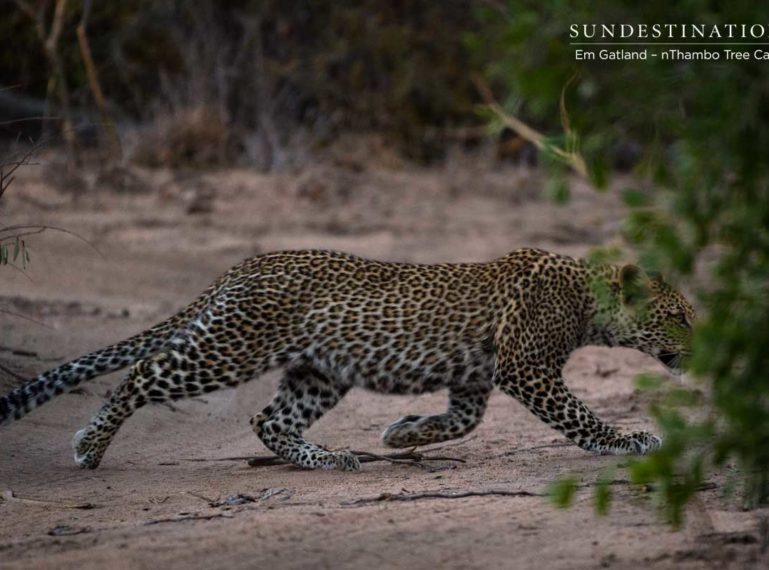
A rustling was heard in the shrubbery and a flash of mottled tawny seemed to dart between the bushes. The game viewer stopped and its occupants listened acutely. Lo and behold, an elegant leopardess was spotted together with her cubs. The bush was thick and green, but the unmistakeable dark rosettes on her coat “shone bright light a diamond” making it possible to gain visibility. Recently, the Klaserie Private Nature Reserve has been a hotspot for leopard sightings! We managed to take a few photos AND get a sneaky bit of camera trap footage. Bjorn’s camera trap footage shows two leopards in the frame – although a bit shaky and dark; you just don’t get anymore raw and real than this!
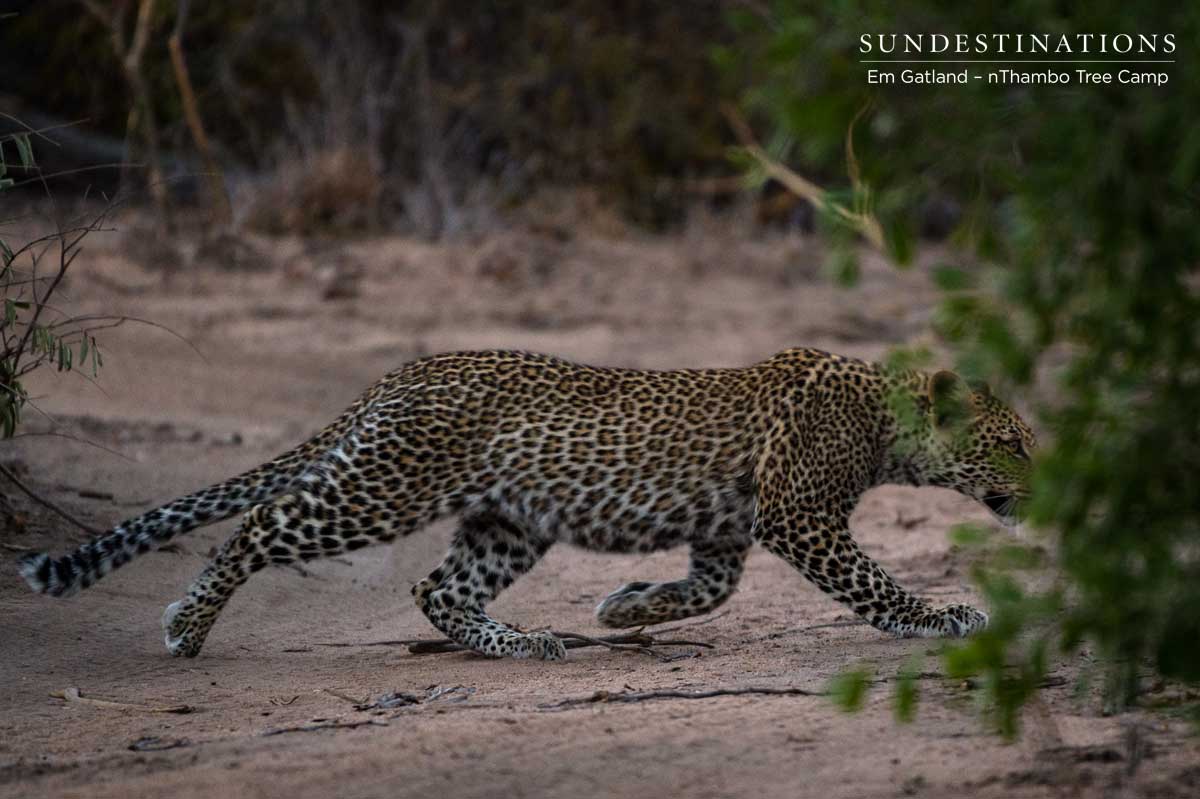
The sighting was fleeting and some rangers claim there are three cubs, others speculate two but we can confirm one for certain! This slender, lithe leopard we’re currently listing as unknown. More information is being gathered but we do know that she is on the periphery of Ross Dam female’s turf – is it her? Unfortunately, the sightings haven’t been long enough for us to completely ID her, but the Africa on Foot and nThambo Tree Camp team are on the lookout. Luckily, Em Gatland was on the scene to photograph a few daylight sightings of this exceptional leopardess.
What do we know about female leopards and their behaviour? The more we understand them, the more we can accurately predict their next move. Although this is never a given, we can base everything on past behaviour and observation.
Here’s what we do know about female leopards:
- They are excellent mothers and will stash their cubs in shrubbery, caves or somewhere secretive. The cubs actually remain hidden until they’re about 10 months old. If there’s imminent danger in the area, the mother will move them to another area for safekeeping. Is this what was happening with the leopardess in the photos?
- When the cubs become older they will accompany their mother’s on a hunt. Here’s where they learn the skills and tactics necessary to stalk and ambush their unsuspecting prey.
- Mother and cub/s will inhabit the same territory even up until the cub is 18 months. As the cub becomes a sub-adult, it will hover on the outskirts of its mother’s territory, hunting and fending for itself. Once old enough it will leave in search of its own territory. This often why you see young lone leopards traversing a wide range and getting into trouble with “locals”.
- So why are the cubs stashed for such a long period of time? A leopardess has such a short gestation period (90 – 105 days) because she cannot afford not to hunt. Being heavily pregnant means carrying extra weight and leopards aren’t exactly famous for having family support! The cubs are rendered helpless when born and continue to grow for 6 weeks in a safe area.
If you want to see anymore of Bjorn’s camera trap footage please check out the nThambo’s Camera Trap Secrets channel.
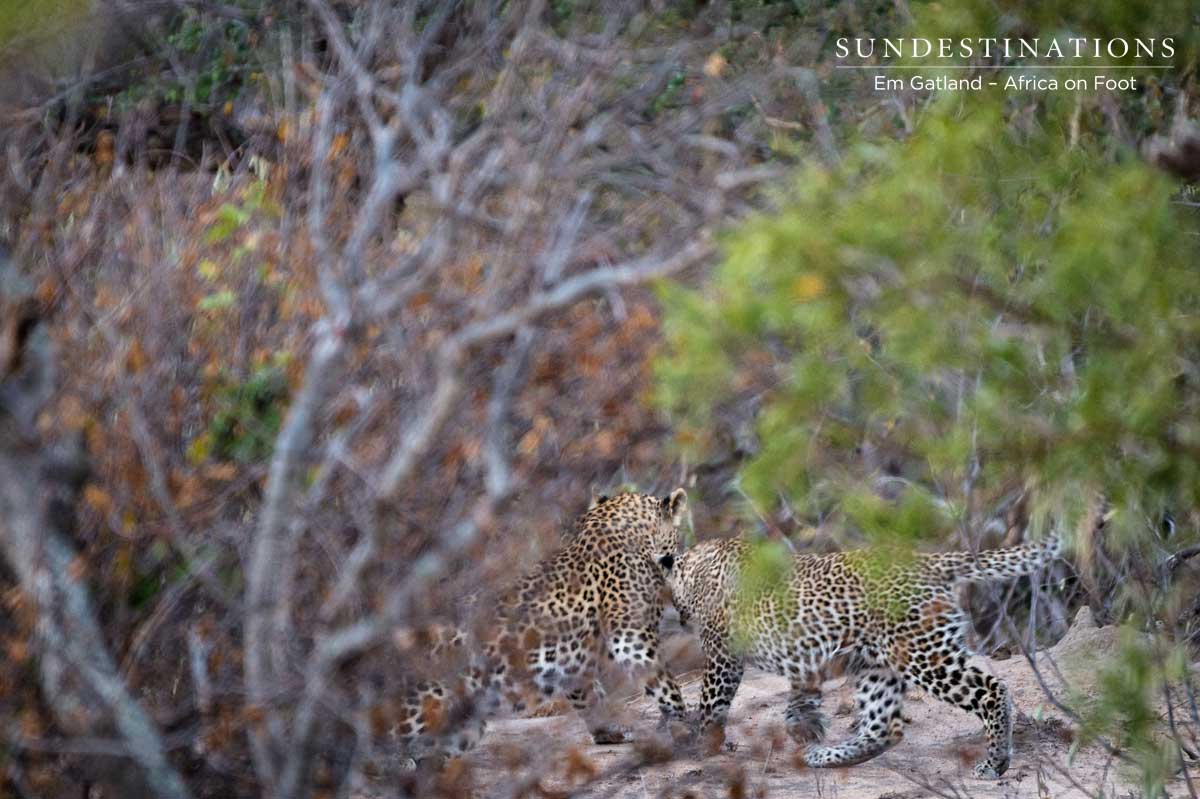
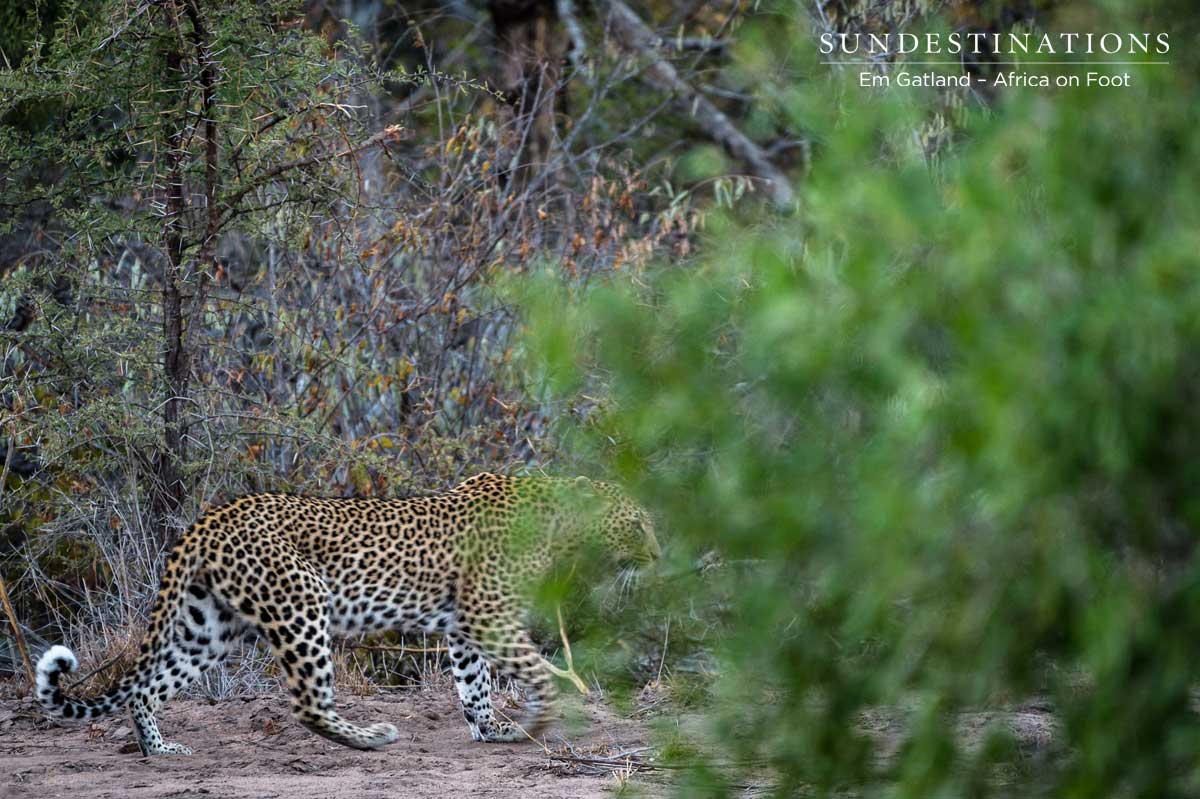
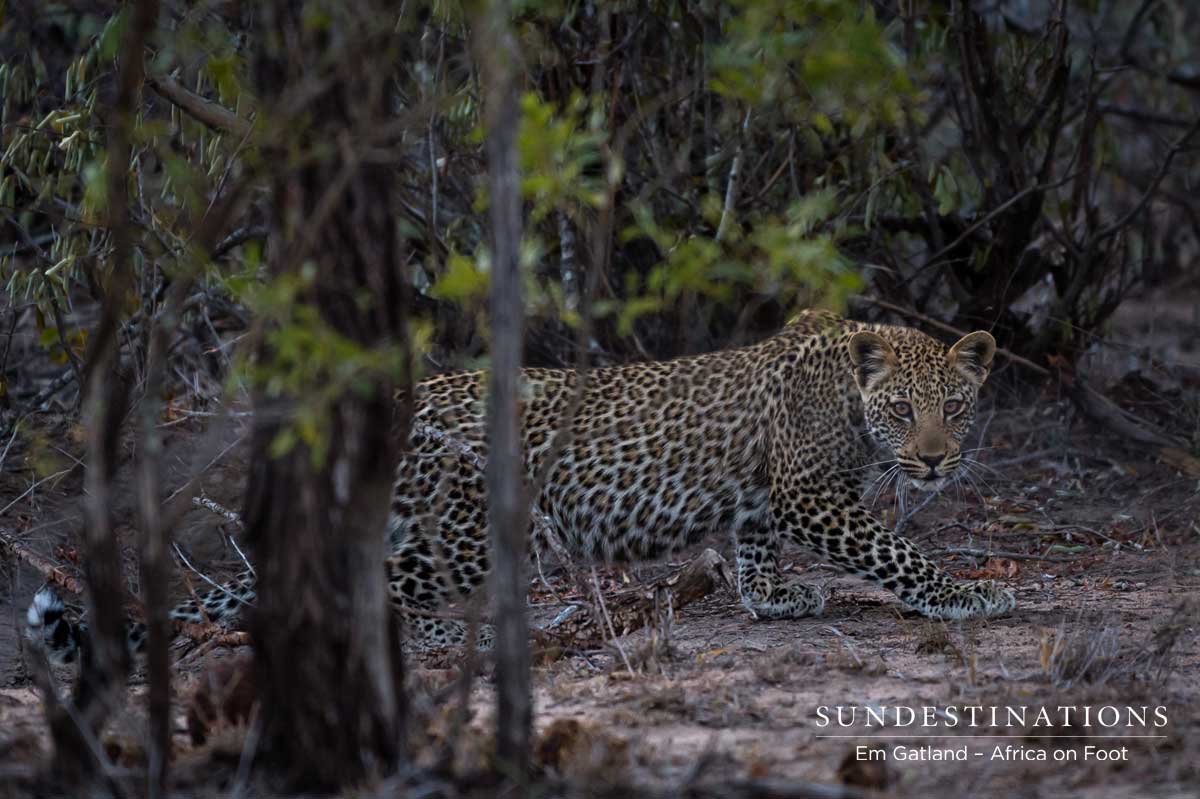
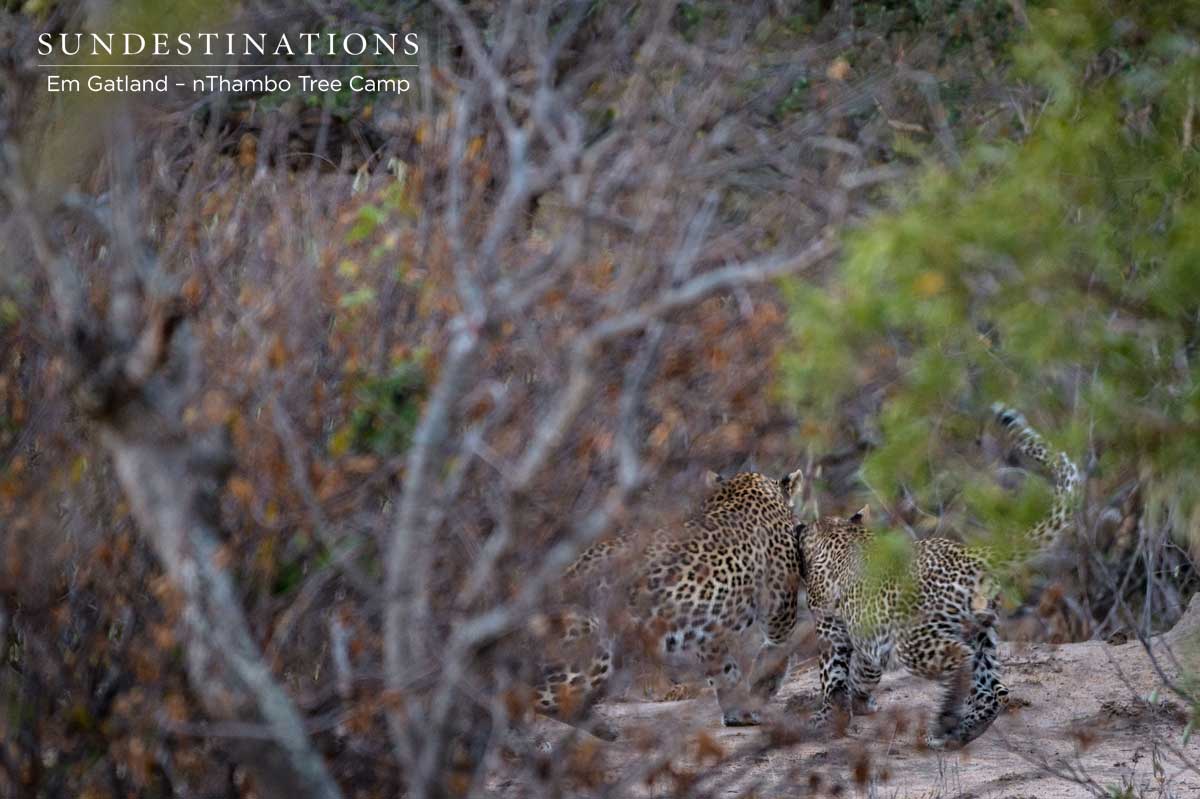
Leave a Comment